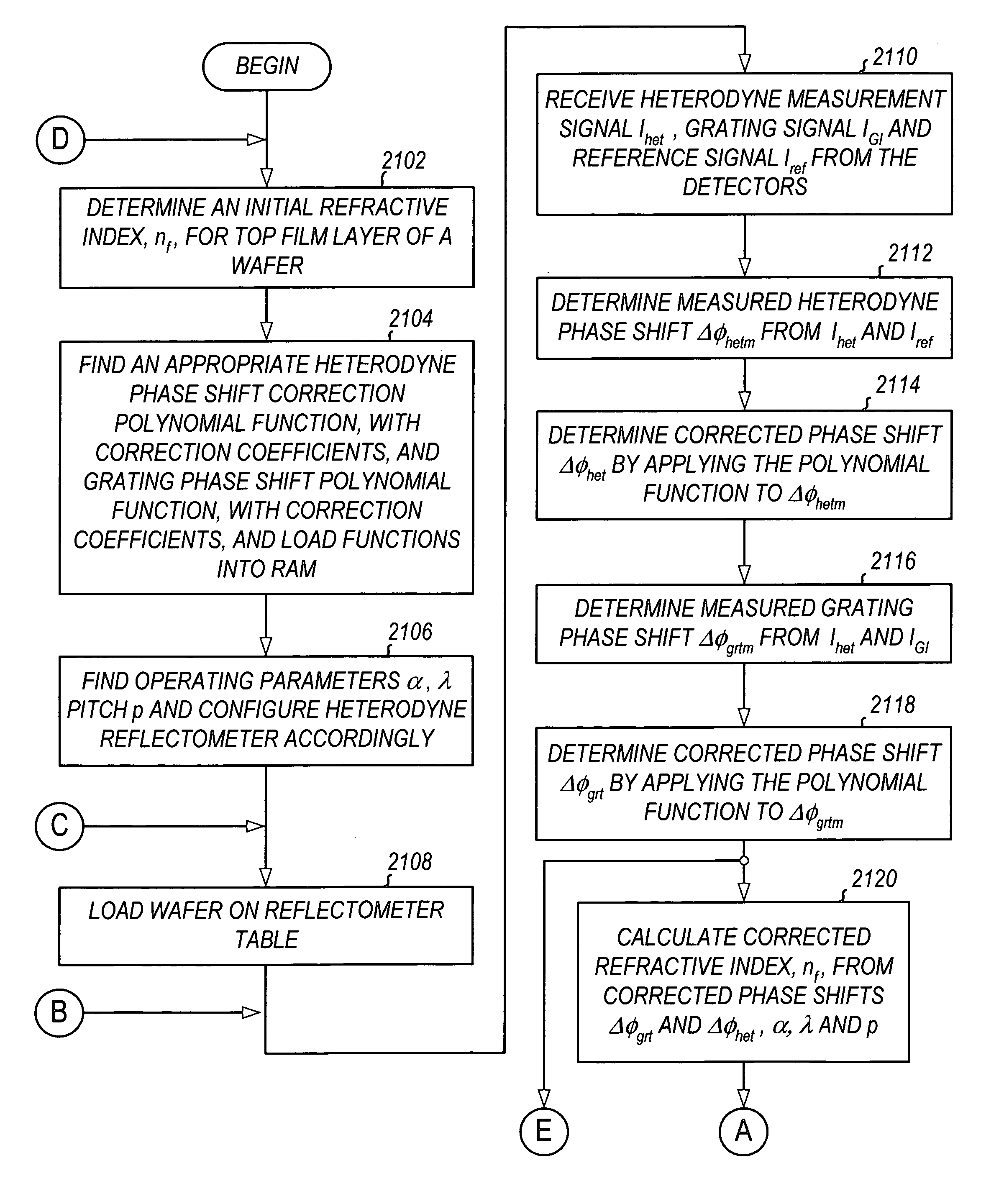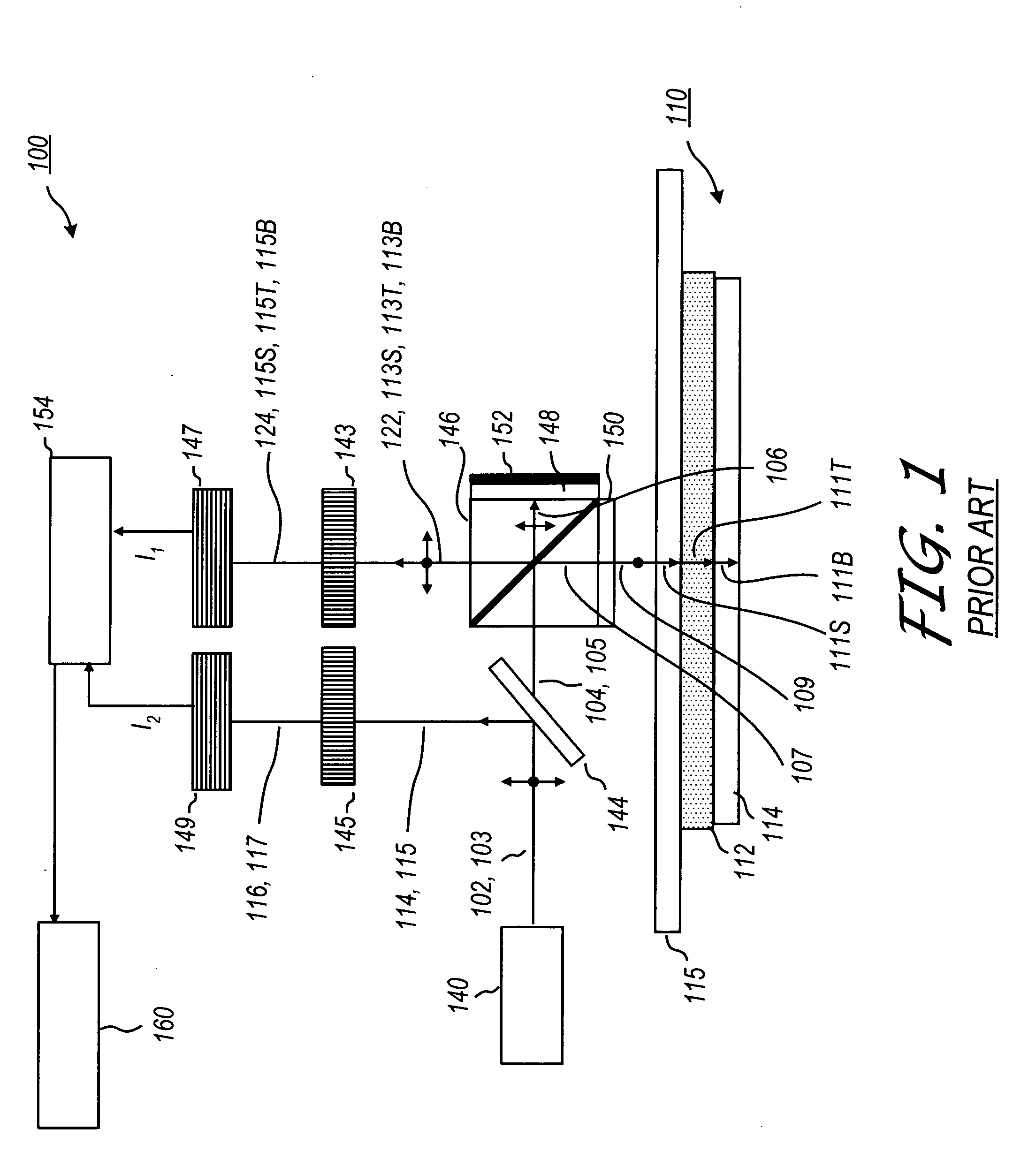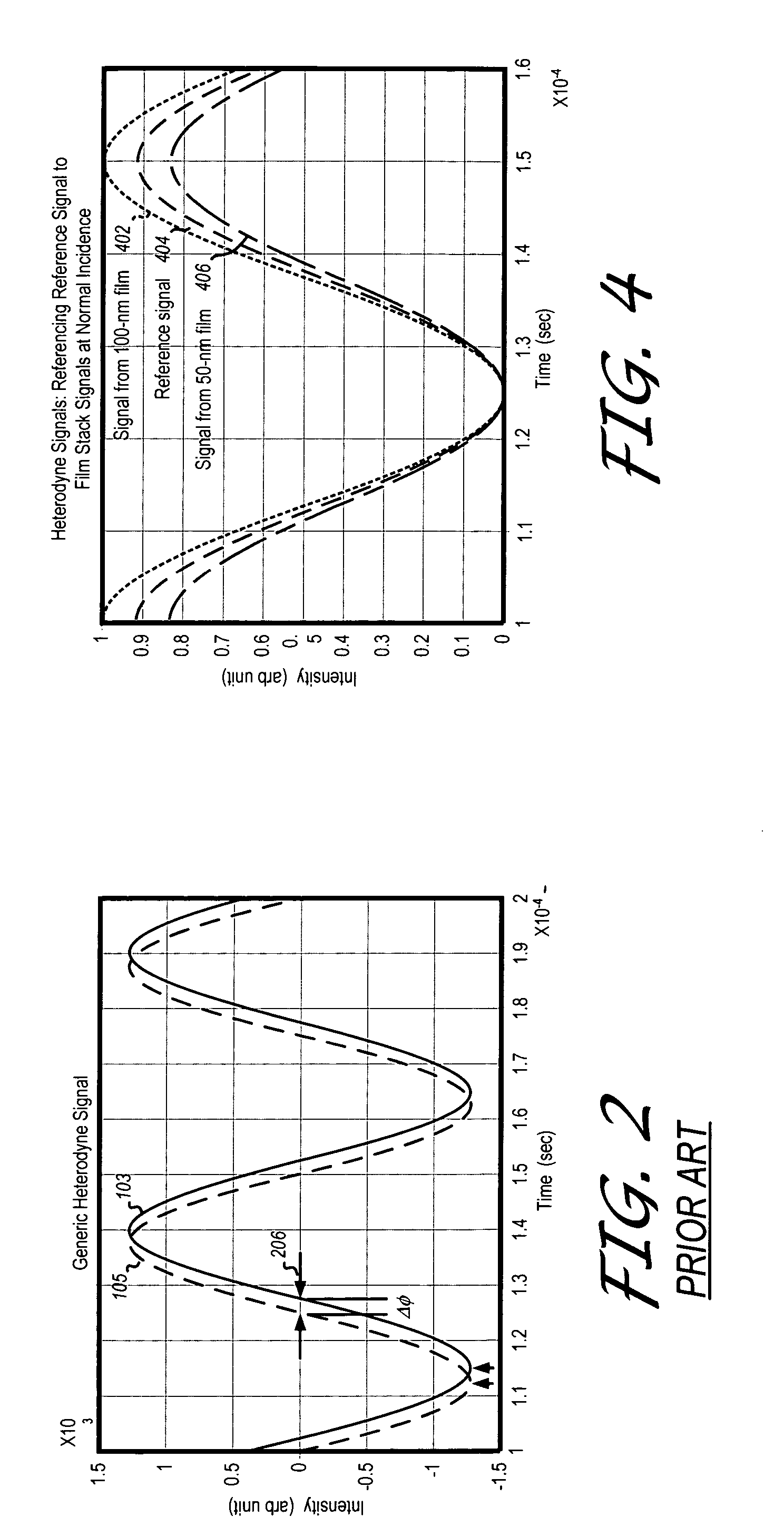Method for monitoring film thickness using heterodyne reflectometry and grating interferometry
- Summary
- Abstract
- Description
- Claims
- Application Information
AI Technical Summary
Benefits of technology
Problems solved by technology
Method used
Image
Examples
Embodiment Construction
[0055] This present invention is useful in monitoring deposition of ultra thin films that are part of semiconductor fabrication. Hence, it can be integrated with deposition tools and diffusion furnaces. Furthermore, the present invention provides an uncomplicated and effective means for extending the use of visible light reflectometry to measure thin-films in the sub 10 Å to 2000 Å film thickness range. Using the present invention, it is possible to obtain superior results by using a monochromatic source with large mean time between failure (MTBF) and a very simple detection scheme. Typically, extension of prior art spectral reflectometers into this thickness region require complex deep ultraviolet (DUV) light sources and reflective or catadioptric optics. Additionally, and in contrast with prior art reflectometers, the present invention does not require a priori knowledge of under layers to determine thickness of several Angstroms thick top layer film. Furthermore, the cost of owne...
PUM
 Login to View More
Login to View More Abstract
Description
Claims
Application Information
 Login to View More
Login to View More - R&D
- Intellectual Property
- Life Sciences
- Materials
- Tech Scout
- Unparalleled Data Quality
- Higher Quality Content
- 60% Fewer Hallucinations
Browse by: Latest US Patents, China's latest patents, Technical Efficacy Thesaurus, Application Domain, Technology Topic, Popular Technical Reports.
© 2025 PatSnap. All rights reserved.Legal|Privacy policy|Modern Slavery Act Transparency Statement|Sitemap|About US| Contact US: help@patsnap.com



